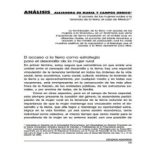La brecha de género en la propiedad de la tierra en América Latina
La brecha entre hombres y mujeres en la propiedad de la tierra en América Latina es enorme. En pocos países, las mujeres alcanzan una cuarta parte de los propietarios de tierra. La desigualdad por género en la propiedad de la tierra se relaciona con la preferencia masculina en la herencia, los privilegios que disfrutan los hombres en el matrimonio, el sesgo masculino en los programas estatales de distribución de tierras y en el mercado de tierras, en donde la mujer tiene menos probabilidades que el hombre de participar con éxito como compradora.








